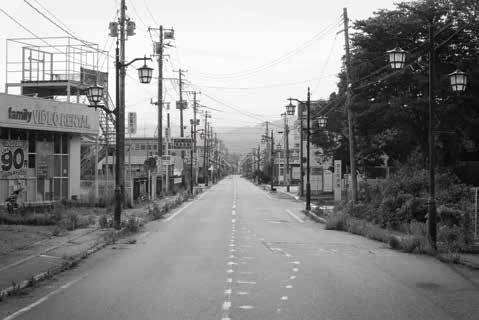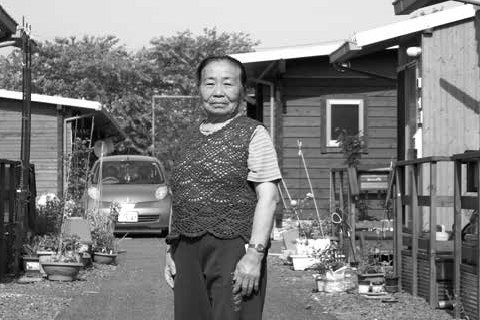Issue:


Despite the continued suffering of many thousands of residents, the rebuilding of Japan’s devastated northeast is agonizingly slow.
On March 13, 2011, I walked through Minamisanriku with colleagues Julian Ryall and Rob Gilhooly, scarcely able to take in what we were seeing. A community of over 17,000 people had been washed away in a giant muddy deluge. Under the crunch of our feet, the town was almost completely silent save for the caw of crows and the distant hiss of a sea that had erupted with such terrible, unexpected violence.
Four years after the tsunami that pummeled Japan’s northeast, turning communities like this into watery morgues, the mantra from Tokyo is that the area’s recovery, the economy and the state of the ruined Fukushima Daiichi nuclear plant, which suffered a triple meltdown after its cooling system failed, are under control. The reality, of course, is very different.
To be fair, the task was always going to be enormous. Across the worst hit areas of Miyagi, Iwate and Fukushima prefectures, over a million buildings were damaged or destroyed and nearly 19,000 people left dead or missing. An early damage estimate by the World Bank of US$235 billion is now considered too low, rendered obsolete by inflation and the ballooning price tag for cleaning up the nuclear mess.
“Every recovery from natural disaster is struck by criticism of the speed of reconstruction, and of the tension between local and central governments about who is in charge,” points out Margareta Wahlstrom, the UN’s first Special Representative for Disaster Risk Reduction. Wahlstrom is in Japan to prepare for a disaster-risk conference this month in Sendai, Tohoku’s largest city.
Nevertheless, the Sendai conference-goers will surely be struck by views of the agonizingly slow pace of recovery around them. Swathes of the northeast coast are still wastelands. Less than 10 percent of the 29,000 housing units planned for the tsunami zone had been completed by the end of last year. Over 170,000 people still live in temporary housing in the region. Tens of thousands have left, perhaps permanently. Minamisanriku has lost 20 percent of its population to death and displacement, according to state broadcaster NHK.
Namie, Tomioka, Futaba and Okuma: “It is safe to say that these communities have been dispersed permanently.”
The breaking up of local communities
The tsunami has accelerated pre-2011 demographic shifts. Older people with generational ties to coastal areas and family graves have stayed, but the young are drifting away, pulled by work and nudged by the fear that their communities will never be rebuilt. Nearly 46,000 people have left the coastal areas of Iwate. About a third of Minamisoma’s 71,000 people, mostly the young, have never returned from the exodus of March 2011.
Despite the public rhetoric that the towns and villages around the Daiichi plant are becoming livable again, the population figures say otherwise. Many households have used nuclear compensation packages of about ¥15 million per person to relocate. By autumn last year, about 300 out of the 1,800 households in the irradiated mountain village of Iitate had bought houses elsewhere, according to anthropologist Tom Gill.
In a book on the impact of the disaster, Japan Copes With Calamity: Ethnographies of the Earthquake, Tsunami and Nuclear Disasters of March 2011, Gill and the editors say: “What is true of Iitate is even more true for the communities closer to the nuclear power plant, such as Namie, Tomioka, and of course, Futaba and Okuma.” They conclude: “It is safe to say that these communities have been dispersed permanently.”
Around the disaster zone, Japan’s construction army has been pressed into action. The rubble-mountains of twisted metal and splintered wood that scarred the outskirts of most coastal towns and cities are gone. The construction boom has sent the cost of building plots, materials and labor soaring. Areas of high ground in the tsunami zone have seen three years of record land-price increases; Shirasagidai, a district of Ishinomaki, has seen a cumulative increase of 129 percent, according to Gill.
That boom is pricing the poor out of many areas even as much of the wider rebuilding crawls along. Futoshi Toba, the mayor of Rikuzentakata, which lost most of its city center and nearly a tenth of its population, is among several local leaders to vent his frustration. He has repeatedly criticized Japan’s labyrinthine bureaucracy and disputes over levees and where to relocate houses and businesses.
Toba has cited a slow-moving plan to relocate hundreds of homeless families to hills overlooking the city, bringing him into collision with multiple bureaucracies. Clearing the hillside forest, leveling and rezoning land and reconstructing large buildings must receive permission from overlapping government agencies, eating up precious time as the life ebbs out of his city. The danger for communities like Rikuzentaka-ta and Minamisanriku is that the longer plans for revival stay parked in bureaucratic limbo, the more their residents lose faith in the future.
Where have all the funds gone?
The problem is not a lack of money. By autumn last year, about ¥5.5 trillion in reconstruction funds had been transferred from the central government to the three worst-hit prefectures. But 60 percent is still parked in local bank accounts, according to a landmark Reuters report. The money sits unused as towns and villages debate whether to move back from the sea and abandon whole communities that have stood for hundreds of years, or build enormous walls to keep it out.
The central government says these walls must be built. A few months after the disaster, it pledged to build hundreds of seawalls and breakers in Fukushima, Miyagi and Iwate, at a total cost of about one trillion yen. Many more are planned. A joint 2012 report by the ministries of agriculture and land said that 14,000 kilometers of Japan’s 35,000-kilometer coastline requires tsunami protection.
The seawall solution is controversial, not least because the evidence for their effectiveness is, at very best, mixed. Fudai, a village sheltering behind a giant concrete shield once condemned as a costly boondoggle, escaped unscathed in 2011. But in the city of Kamaishi, a $1.6 billion breakwater listed in the Guinness Book of Records as the world’s largest, crumbled on impact with the tsunami.
Nearly 90 percent of the seawalls along the northeast coast suffered similar fates. Critics say they made the impact of the deluge in many places worse. “There is simply no guarantee that seawalls will stop every single tsunami,” said Nobuo Shuto, a tsunami engineer at Tohoku University.
Last year, I travelled with The Guardian’s Justin McCurry to view one of the most disputed seawalls, in the village of Koizumi, Miyagi Prefecture. The deluge had flattened Koizumi and drowned 40 of its 1,800 residents. The government’s response was to order a 14.7-meter wall, with a price tag of ¥230 million, all to shelter a community that is no longer there. The village has been moved 3km inland from the sea.
Even more puzzlingly, the land ministry admits the new structures are not designed to withstand the sort of seismic event that occurred in 2011. That quake is considered a once-in-a-thousand-year calamity and nothing could block the tsunami that followed. Koizumi’s wall is less than half the size of the highest wave that hit the area in 2011. Yet the walls will save lives, and many residents demand them, insists the ministry.
Sea walls face opposition from residents
Hiroko Otsuka, who grew up near Koizumi, disagrees. She says coastal residents sheltering behind the walls are lulled into a sense of false security, and lose the ability to read the sea. The 2011 deluge killed her mother and her brother’s two children. They could have been saved if they had fled 10 meters up a hill behind their house, she insists. They didn’t run because they thought the village seawall would protect them.
While local communities wrestle with these dilemmas, reconstruction stalls. Few of the 460 planned levees along the northeast coast have been completed, according to NHK. Two-thirds had not even started by 2014. “Many prefectural governments have foregrounded the seawalls as a precondition of rebuilding,” said Marieluise Jonas, a landscape architectural designer with RMIT University in Australia.
Given the uncertainties, the price tag for putting Tohoku back to rights is scientific guesswork. The biggest uncertainty of all is the nuclear cleanup. Decontamination costs depend on lowering annual radiation to one millisievert, a goal now widely seen as unrealistic. Tepco says decommissioning the Daiichi’s four damaged reactors (the plant has six) will cost ¥978.6 billion, but that does not include the cleanup, fuel storage or compensation.
The Japan Center for Economic Research, a private research institute, put the bill over the next decade at ¥5.7tn to ¥20tn, excluding compensation to the fisheries and farming industries. A broader calculation, by the same research institute, puts the entire cost of the disaster at ¥40-50tn. Remarkably, Tepco soldiers on. In December the company said it expects a pretax profit of ¥227 billion for the current business year. The good news for consumers is that means no rise in electricity bills at least for now.
Around Tohoku, when you talk to people languishing in cramped two-room housing, above all a consistent fear emerges they are being forgotten. This fear has deepened since Tokyo won the right to host the 2020 Olympics, drawing more firepower away from the northeast to the already rich, overstuffed capital. In a February interview with The Economist, Takuya Tasso, governor of Iwate, spoke for many when he said the government is losing interest in the region.
David McNeill writes for The Independent, The Economist, The Chronicle of Higher Education and other publications. He has been based in Tokyo since 2000.

